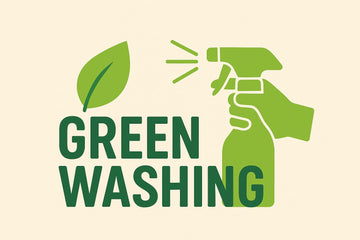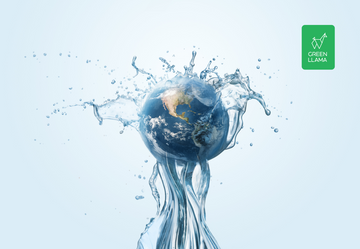Whales and the Carbon Cycle: Guardians of the Blue Planet
by Matt Keasey on Sep 01, 2023
How Whales Help Fight Climate Change
TL;DR
- Whales move nutrients from depth to the sunlit layer via the “whale pump,” fertilizing surface waters. :contentReference[oaicite:0]{index=0}
- Those nutrients stimulate phytoplankton — tiny plants that pull CO₂ from the air. :contentReference[oaicite:1]{index=1}
- Whales also store carbon in their bodies; when great whales die and sink, that carbon can be locked away for centuries. Average lifetime storage ≈ 33 tons CO₂ per great whale (not per year). :contentReference[oaicite:2]{index=2}
- Protecting whales amplifies natural carbon capture and supports ocean food webs — but ocean threats like plastic pollution undermine these benefits. :contentReference[oaicite:3]{index=3}
Why whales matter for the carbon cycle
Whales are ecosystem engineers. By feeding at depth and defecating near the surface, they deliver nitrogen, phosphorus, and iron to the euphotic zone — a process nicknamed the whale pump. This nutrient lift increases primary productivity where sunlight can power photosynthesis. :contentReference[oaicite:4]{index=4}
From nutrients to carbon drawdown
Phytoplankton respond to this fertilization with extra growth, and as they photosynthesize they absorb CO₂. Some of that carbon moves down the food web; some sinks as organic particles, exporting carbon to the deep ocean. In iron-limited regions, even trace iron from whale feces can measurably boost export. :contentReference[oaicite:5]{index=5}
Whales as living carbon stores
Great whales accumulate carbon in biomass over long lifespans. When they die naturally and their carcasses fall to the seafloor, much of that carbon is sequestered for decades to centuries. Estimates suggest each great whale stores ~33 tons of CO₂ on average across its life — a useful heuristic for conservation value, but not an annual rate. :contentReference[oaicite:6]{index=6}
Threats that blunt the climate benefit
- Historical and ongoing depletion: Industrial whaling removed large fractions of great whale populations, shrinking their ecosystem engineering role. Restoring populations rebuilds that function. :contentReference[oaicite:7]{index=7}
- Plastic pollution: Between ~4.8 and 12.7 million metric tons of plastic likely entered the ocean from land in 2010 alone, with risks of entanglement and ingestion across the food web, including whales. :contentReference[oaicite:8]{index=8}
What effective conservation looks like
- Reduce ship strikes and fishing gear entanglement with dynamic speed zones, gear innovation, and better monitoring. (Aligns with the goal of rebuilding populations to restore ecosystem functions.) :contentReference[oaicite:9]{index=9}
- Tackle land-based plastic leakage via waste management upgrades and single-use reduction policies. :contentReference[oaicite:10]{index=10}
- Support protected areas and science that track nutrient flows, phytoplankton responses, and population recovery. :contentReference[oaicite:11]{index=11}

Conclusion
Whales don’t replace emissions cuts — but as nutrient movers, phytoplankton boosters, and carbon stores, healthy whale populations make the ocean’s own carbon machinery run better. Protecting them is good for biodiversity and the climate.
Key sources
- Roman & McCarthy (2010). The whale pump and surface nutrient enrichment. PLOS ONE. :contentReference[oaicite:12]{index=12}
- Roman et al. (2014). Whales as marine ecosystem engineers. Frontiers in Ecology and the Environment. :contentReference[oaicite:13]{index=13}
- Lavery et al. (2010). Sperm whale iron fertilization and carbon export in the Southern Ocean. Proc. R. Soc. B. :contentReference[oaicite:14]{index=14}
- IMF F&D (2019). Nature’s solution to climate change — 33 tons CO₂ per whale (lifetime). :contentReference[oaicite:15]{index=15}
- Jambeck et al. (2015). Plastic waste inputs from land into the ocean. Science. :contentReference[oaicite:16]{index=16}





